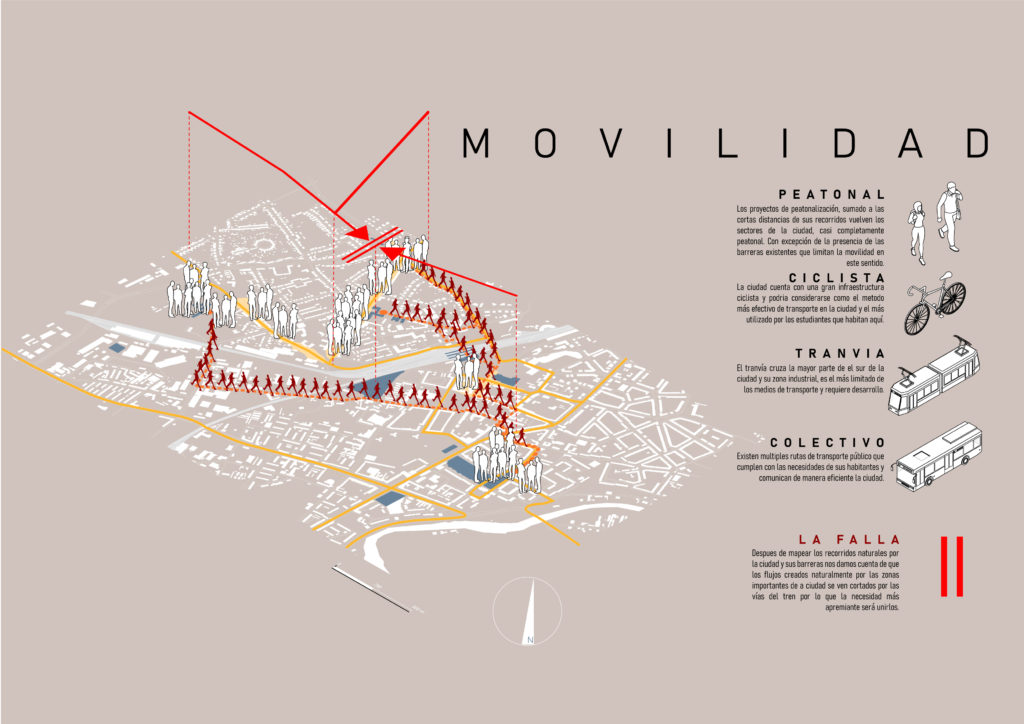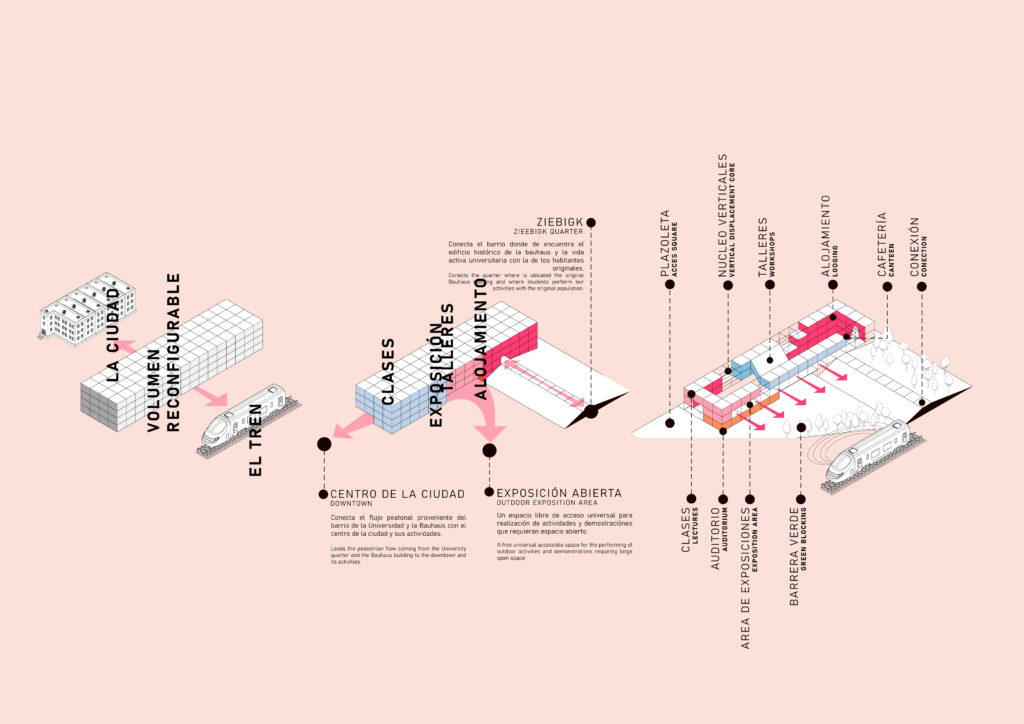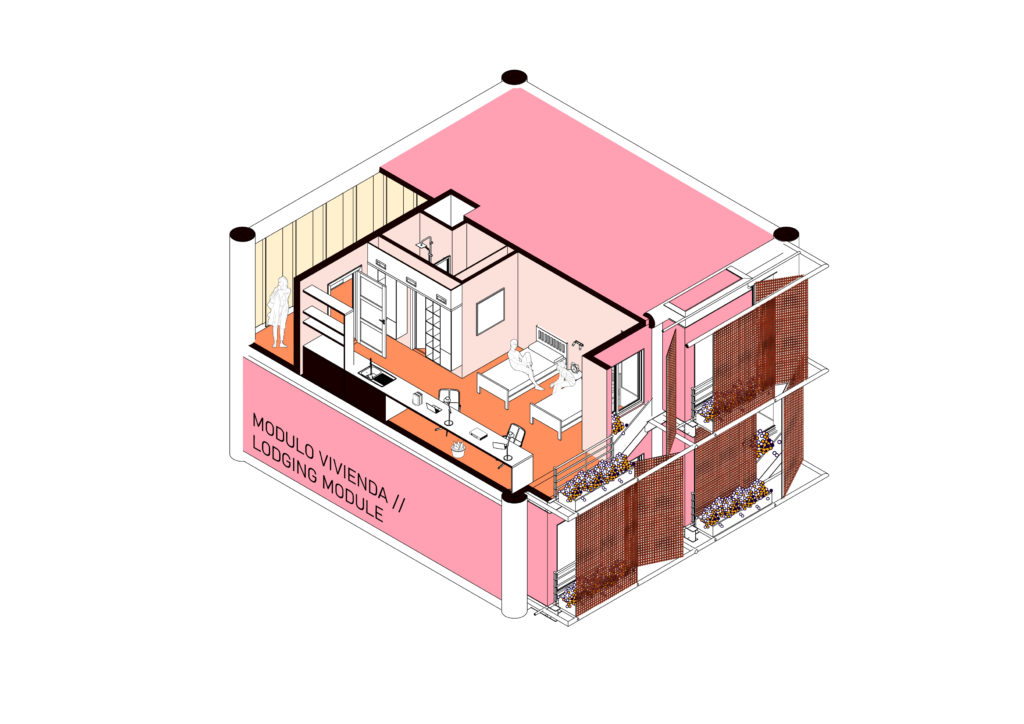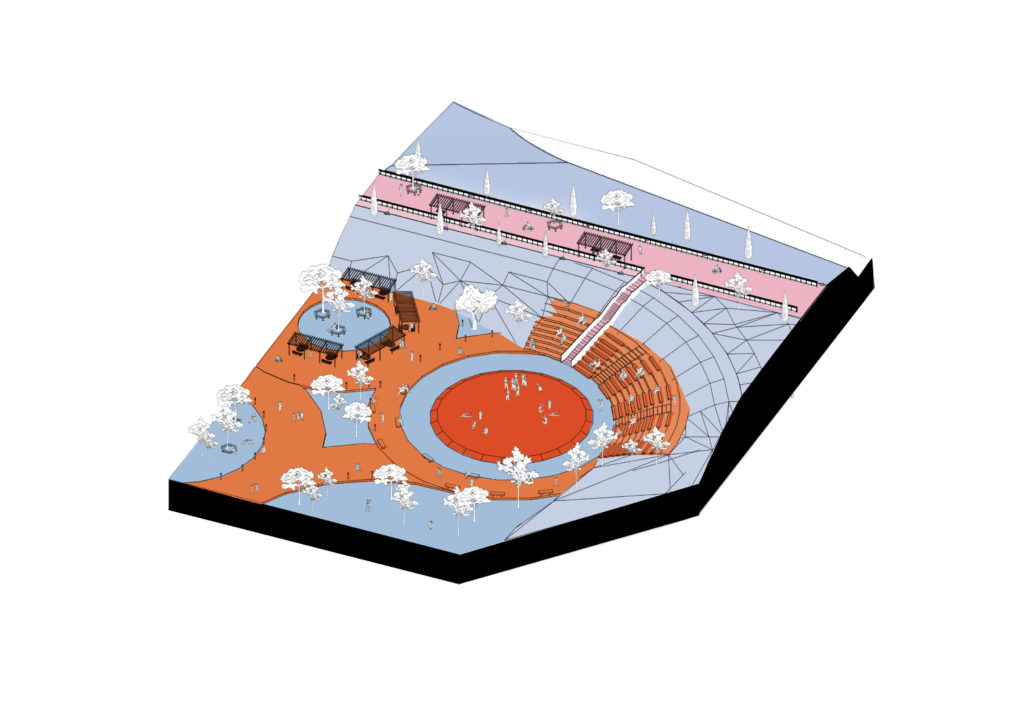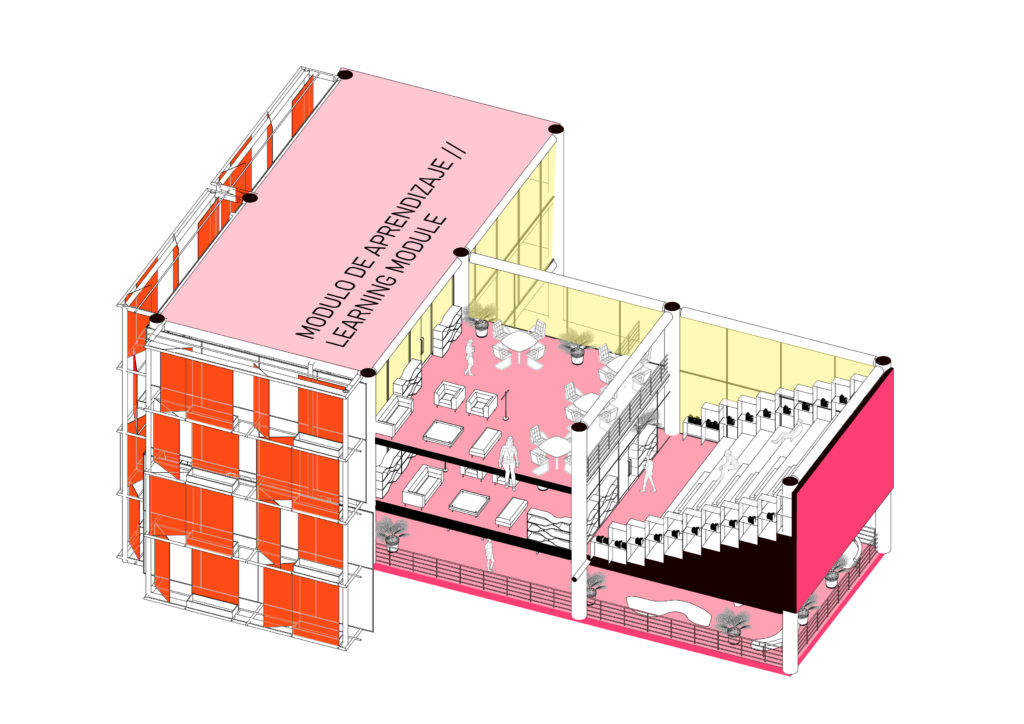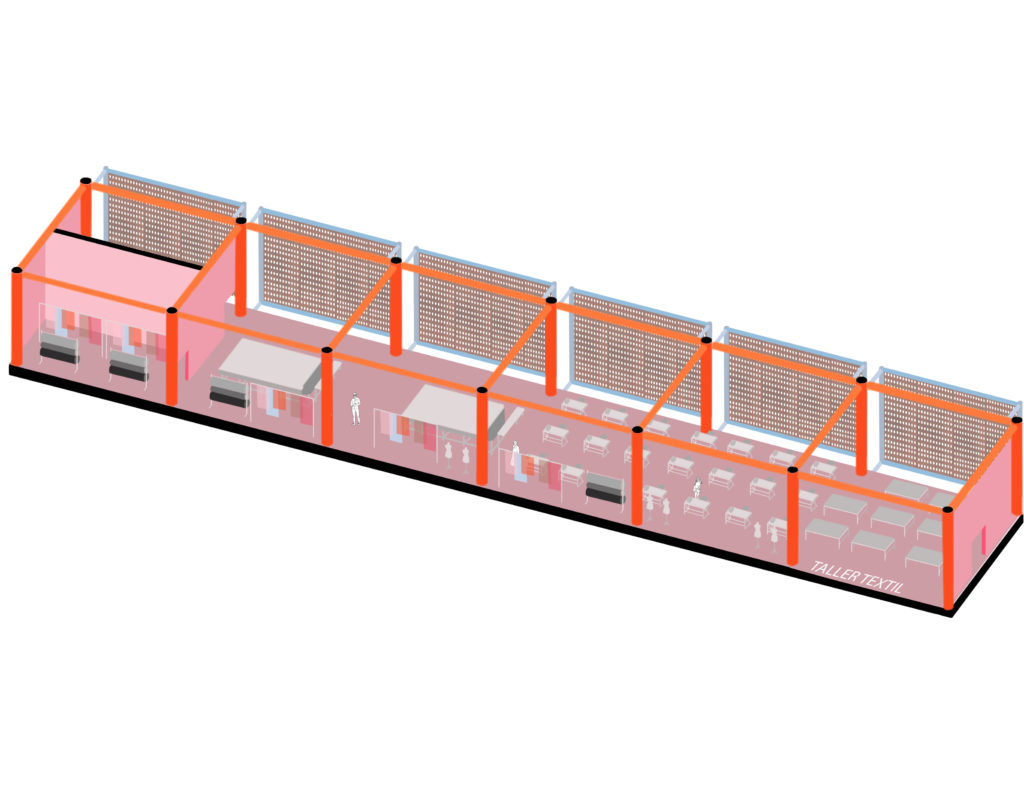Centre of disciplines, Bauhaus development laboratory 2021
We cannot conceive the idea of designing this project without considering the legacy of Bauhaus ideals, its search for innovation and the fusion of art with collaborative work, the juxtaposition of critical-logical and creative-disruptive thinking.
Its identity as a creation laboratory/workshop/studio and relationship with the different contexts that coexist in this multicultural city seeks to achieve cohesion between the major parts of the city using different design strategies and to generate a space that can be understood as an extension of our home. This is how the concept took its character and we finally came to the proposal of an informative and innovative laboratory/workshop/studio that aims to be disruptive, collaborative and groundbreaking.
As mentioned before, seeking to unite the two parts of the city involves turning the proposal into an urban scale, resulting in the inclusion of the program of an elevated pedestrian crossing that connects the east and west part Dessau-Roßlau.
To successfully achieve a seamless union between two different contexts of the city, we must involve our proposal in an urban design language. The result being an elevated pedestrian crossing that connects both east and west zones of Dessau-Roßlau.
The spatial distribution is divided into a resting zone(housing) and a food court module, located to the south and the learning and leisure area, located to the north, divided by an internal courtyard that integrates with the functions of the facilities and joins with the exterior area.
The building entrances are fully open to the user. An outdoor forum becomes the threshold of the complex which manifests the extension of the interior space of the cafeteria, amenities and exposition. In it, both formal and spontaneous activities take place while also serving as an integrator of the urban landscape of the city.
The skin of the building symbolizes the non-hierarchical system, being the result of a removable, modular and modifiable facade. Indeed, it responds to an analysis of the sun´s path. The material choice comes from the intention to generate a texture that due to its natural oxidation process and as time goes by, becomes an aesthetic effect contrasting with the existing steel buildings in the area.
The module strategy aims to be reconfigurable and flexible, that is why the structure itself is a modular system.
The proximity between the classroom and workshops correspond to the users necessities, there will not be any social typecasting since it will be adaptable to the different usage and needs, giving as a result a completely open space, divided using removable partitions or even the furniture itself.

